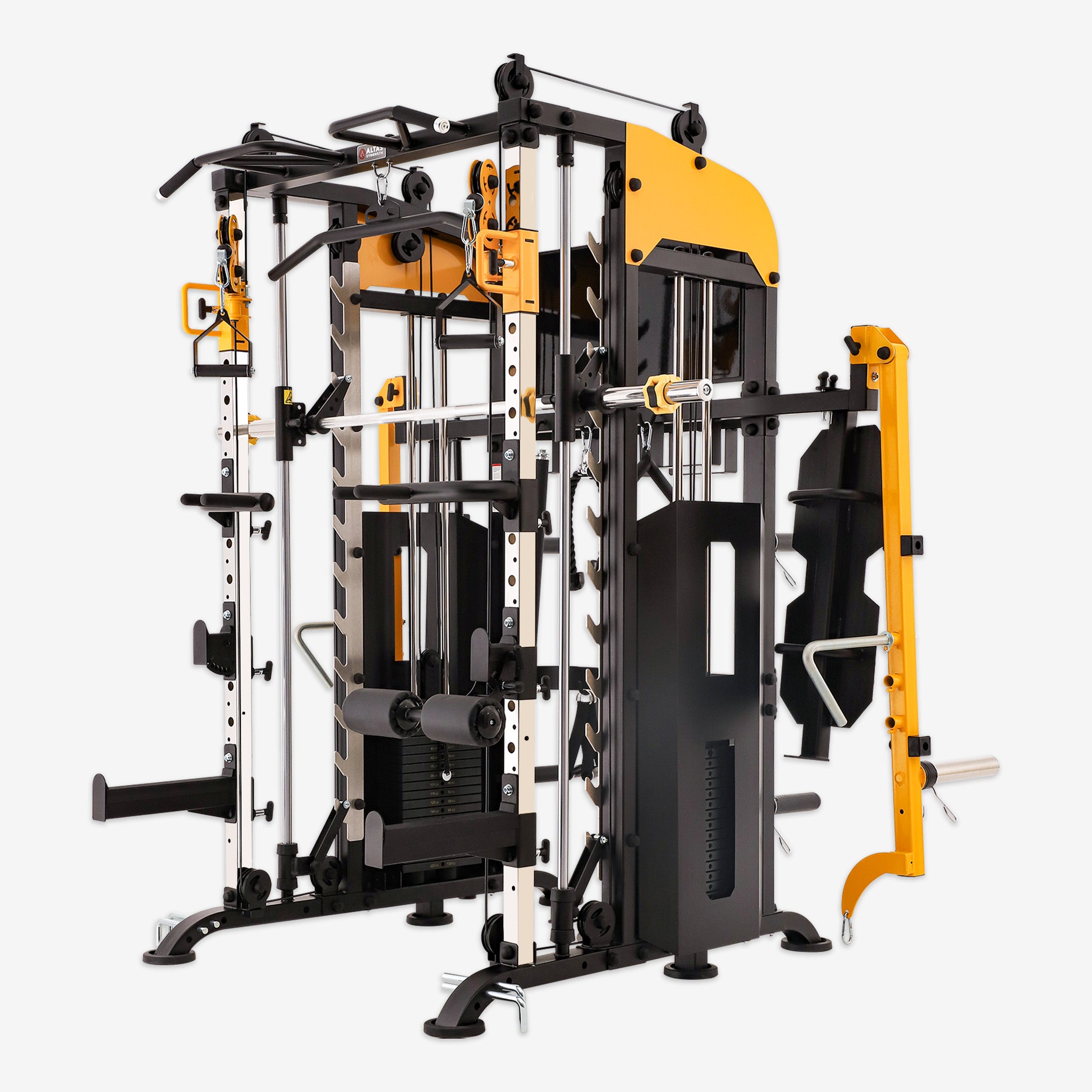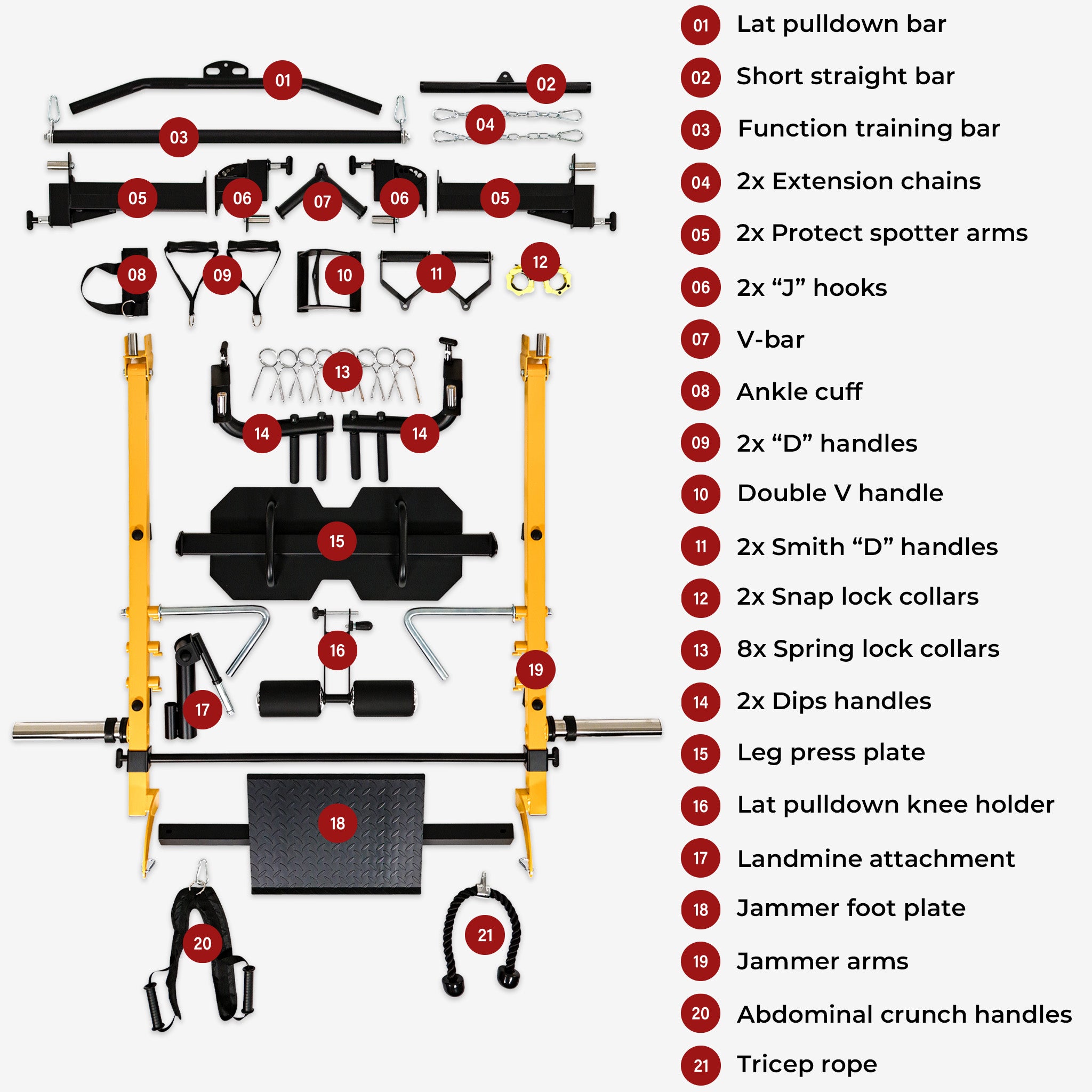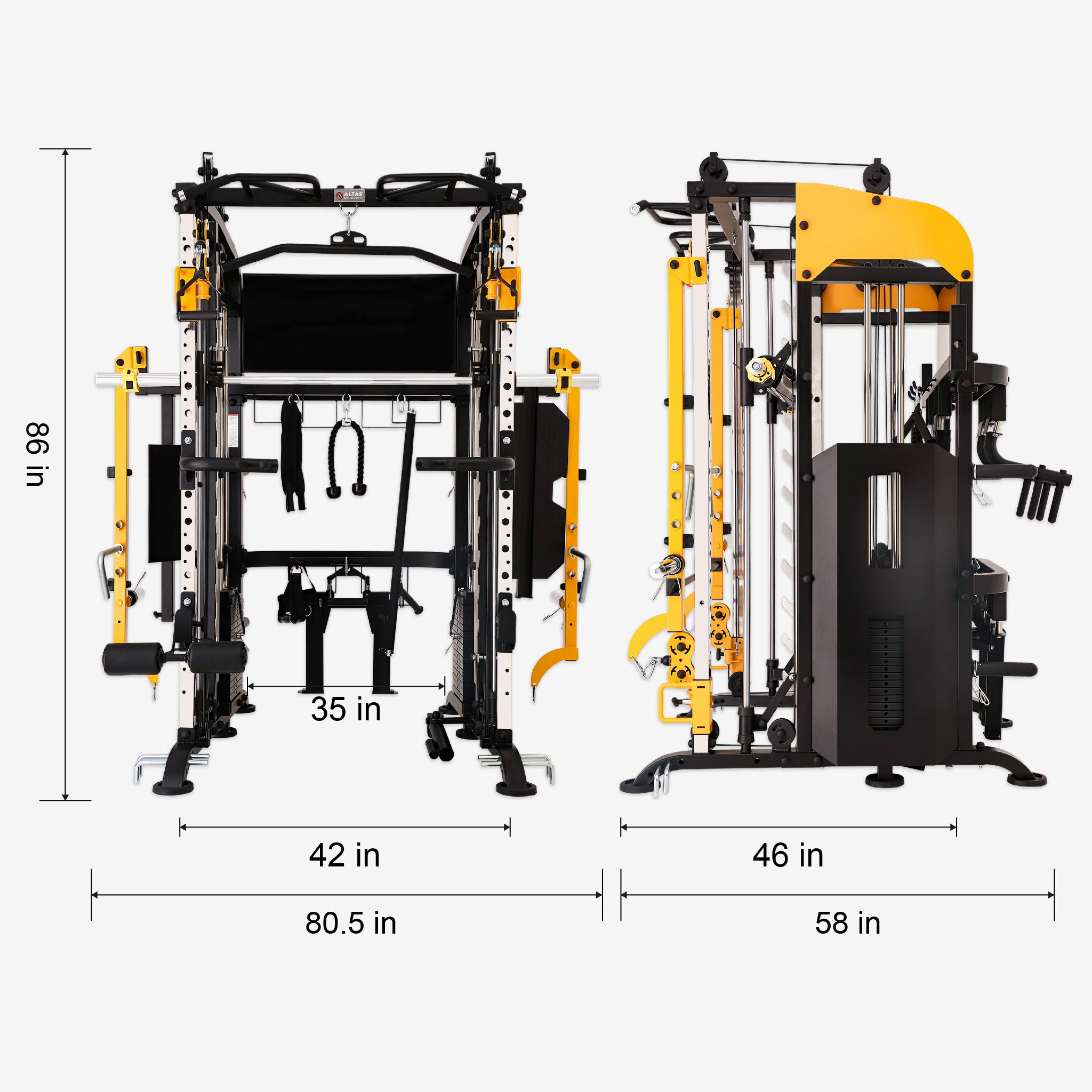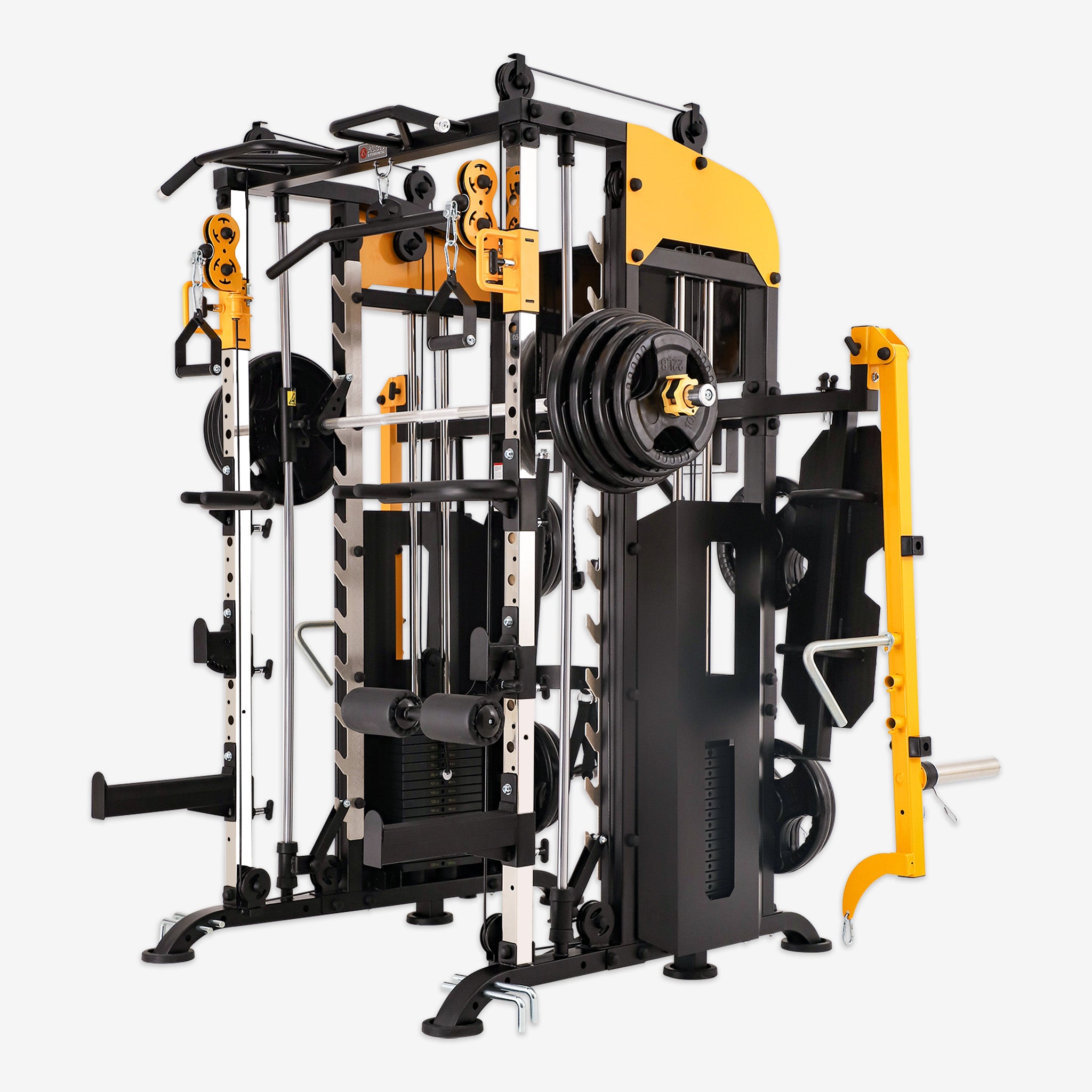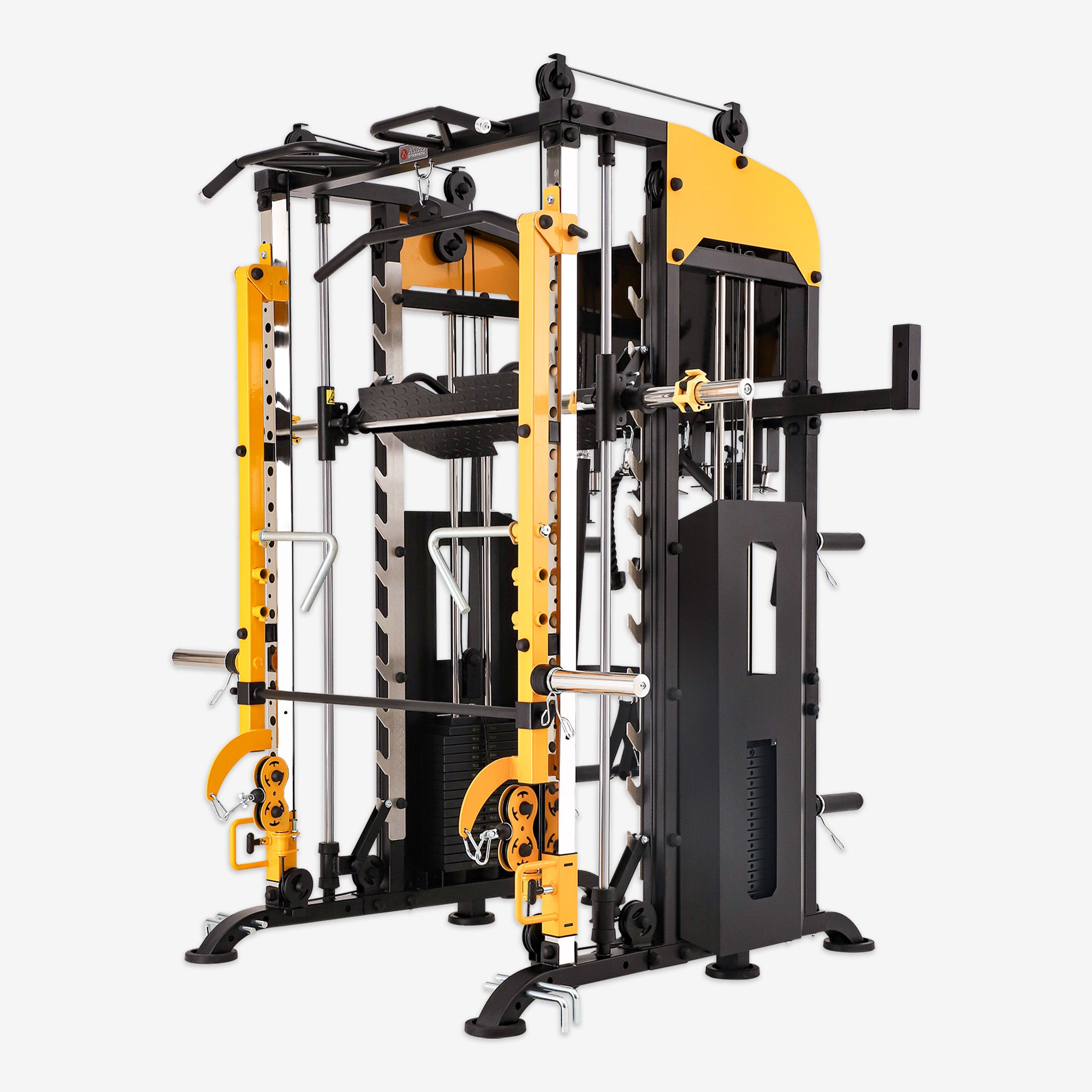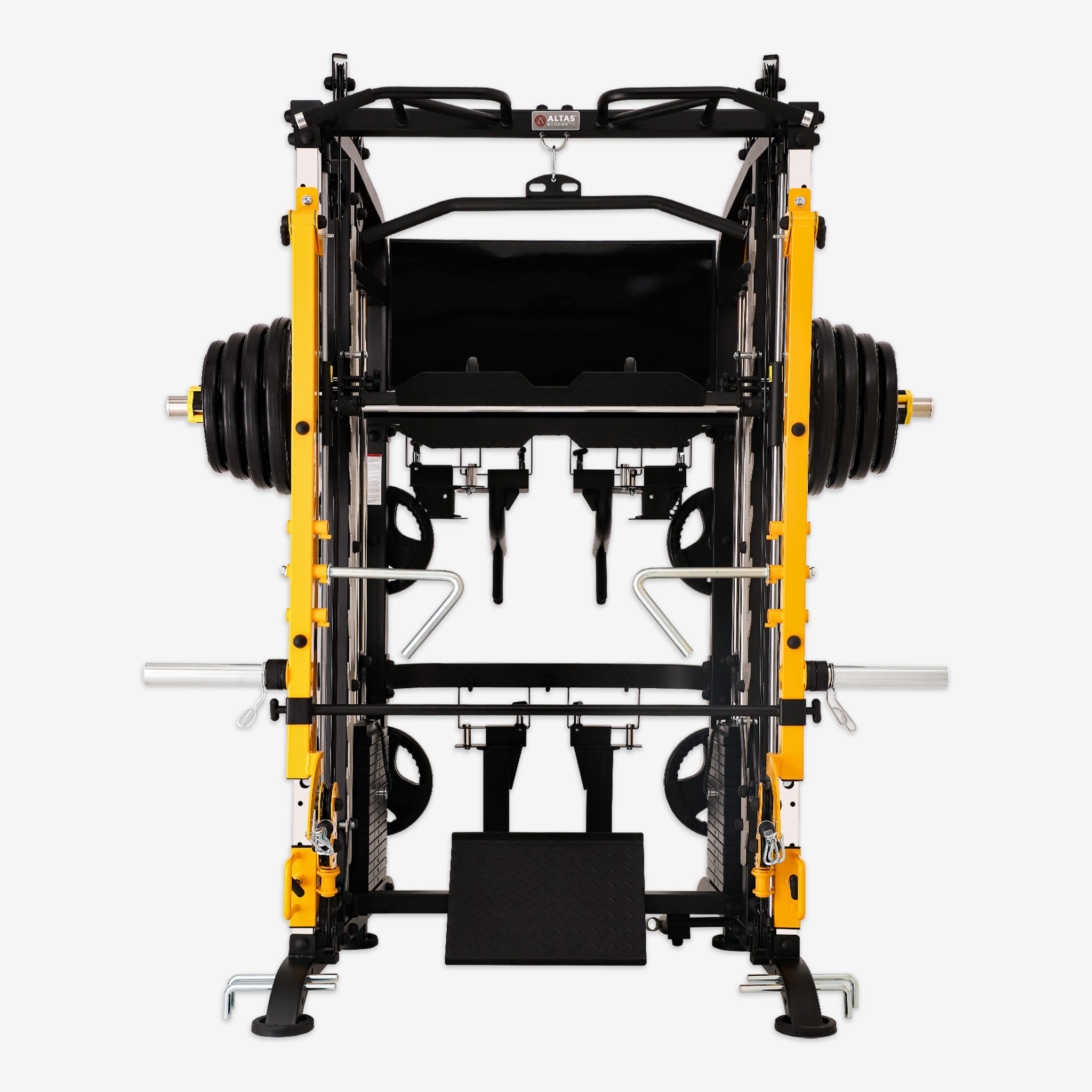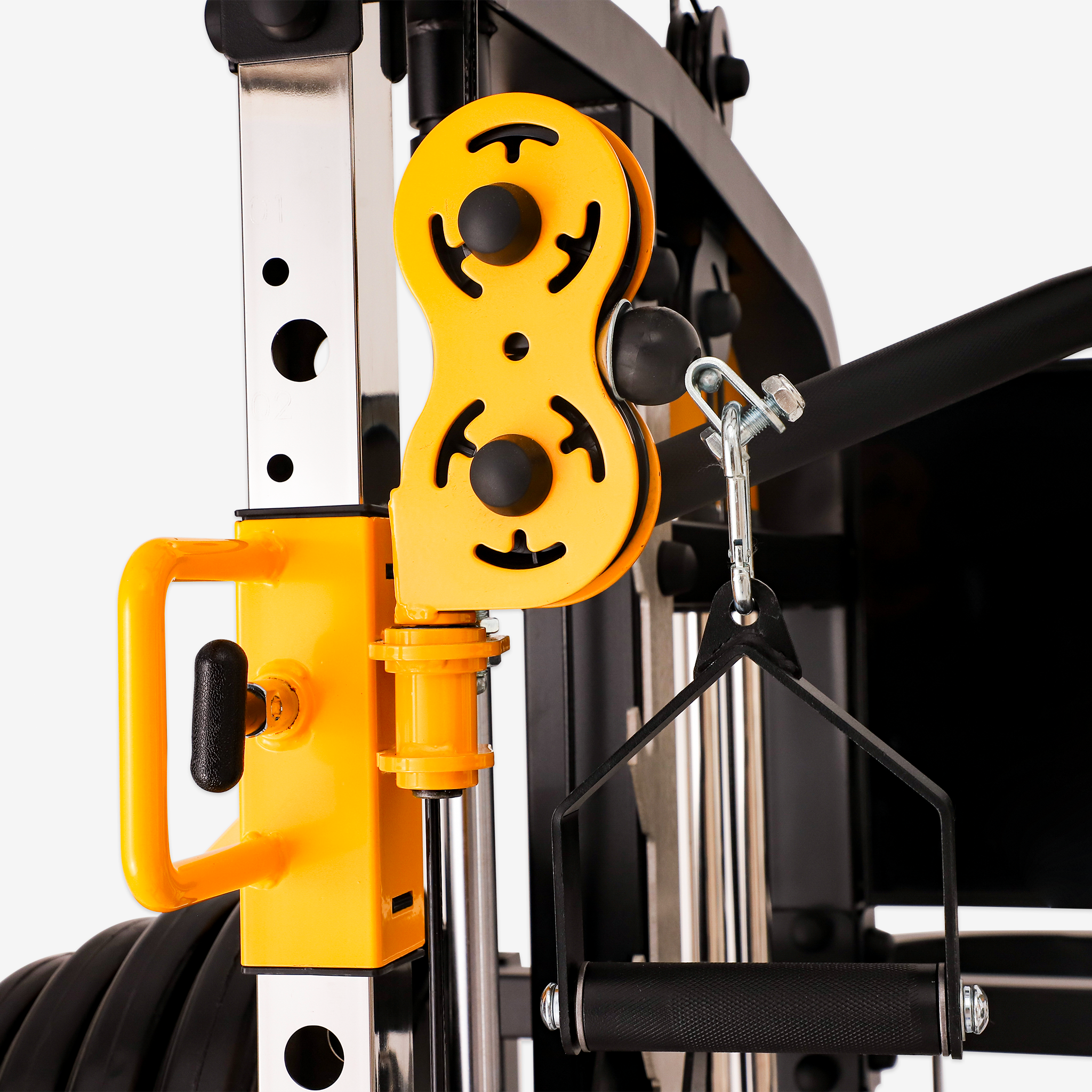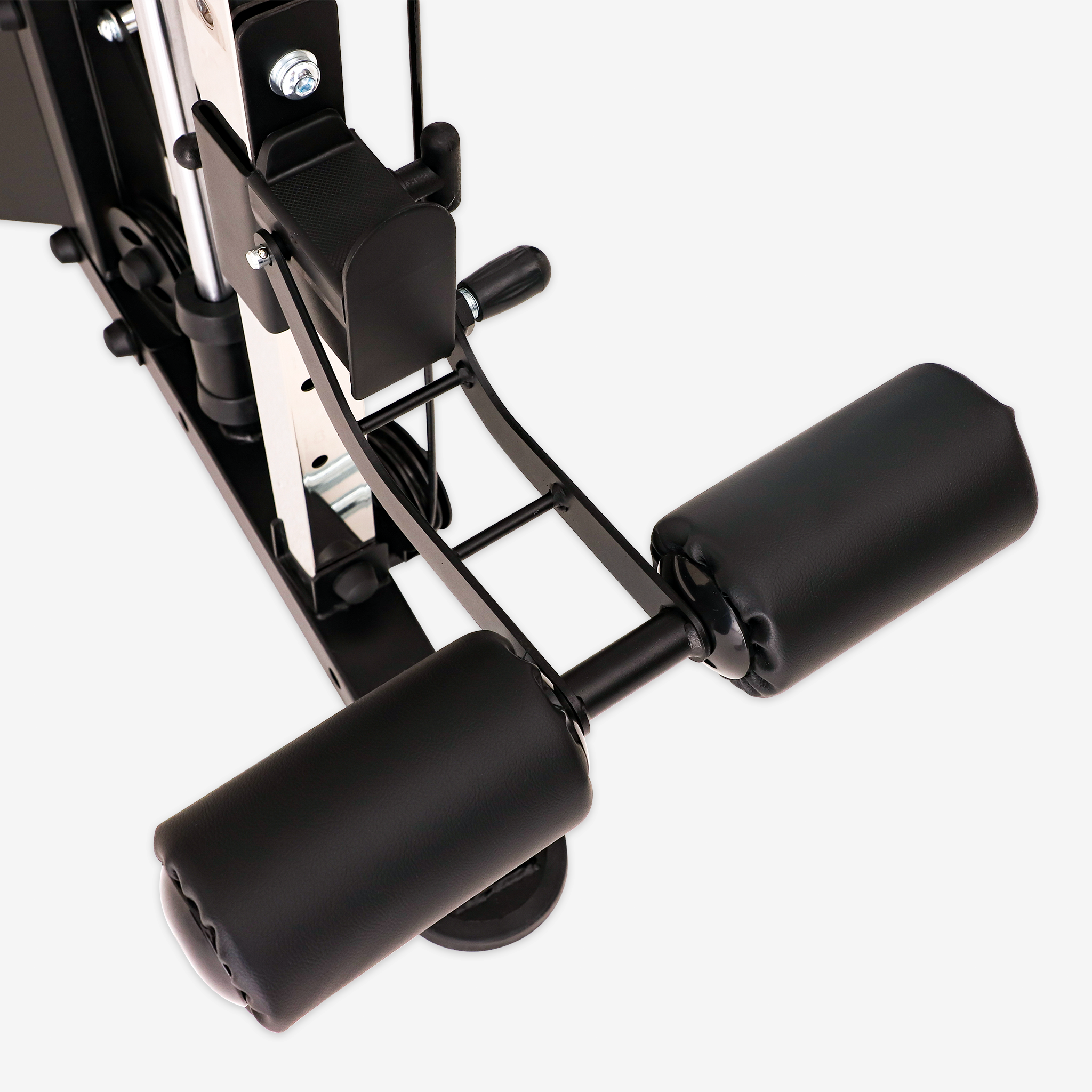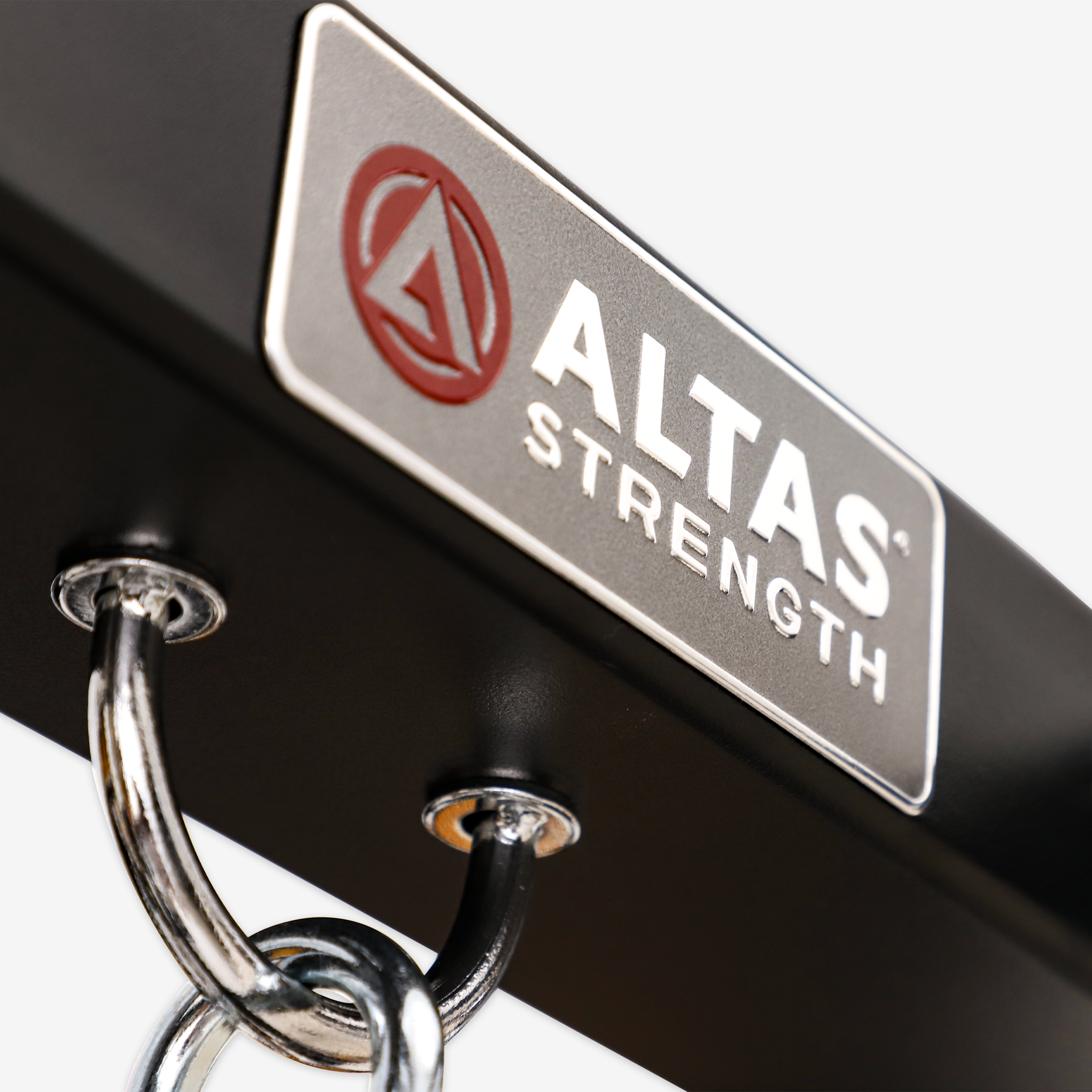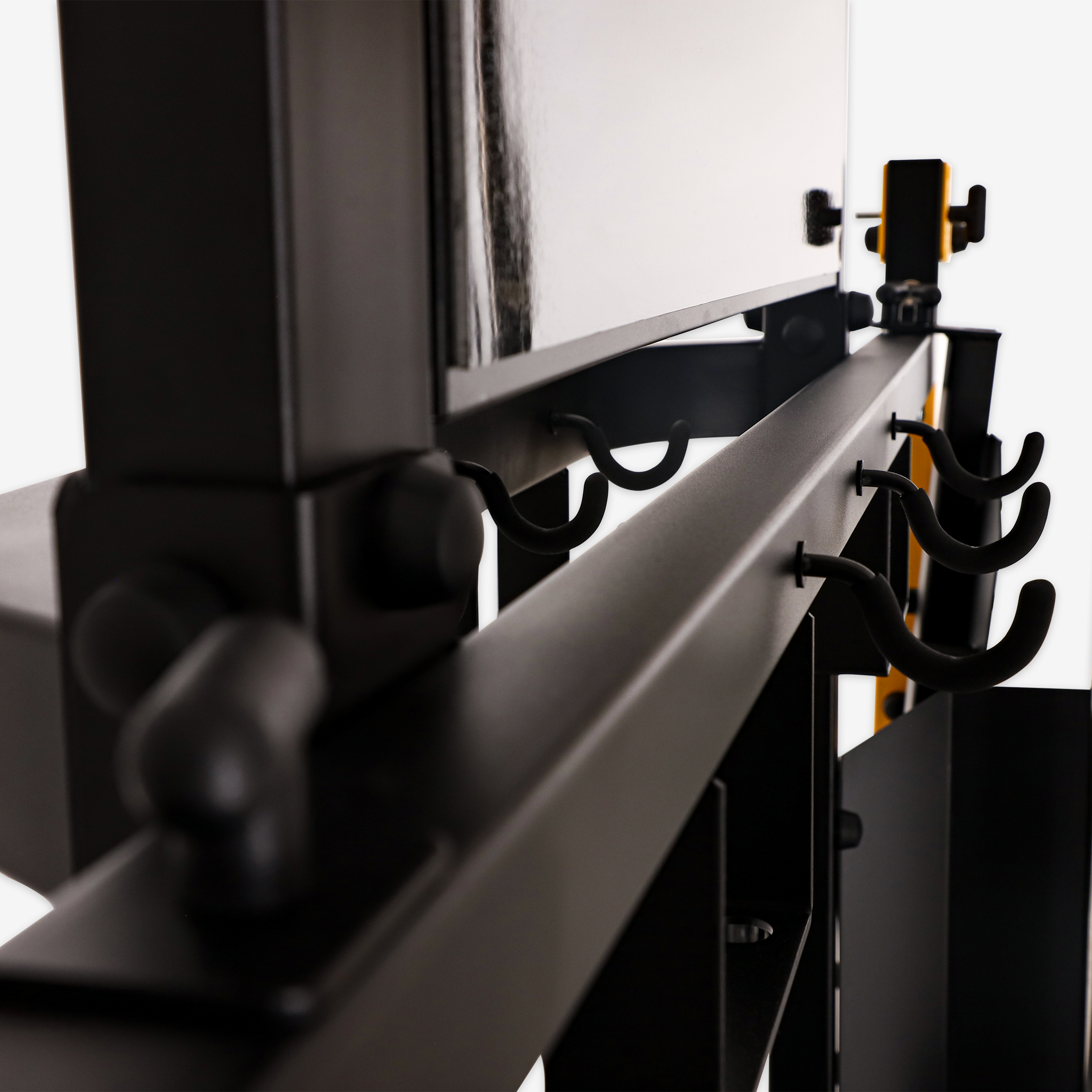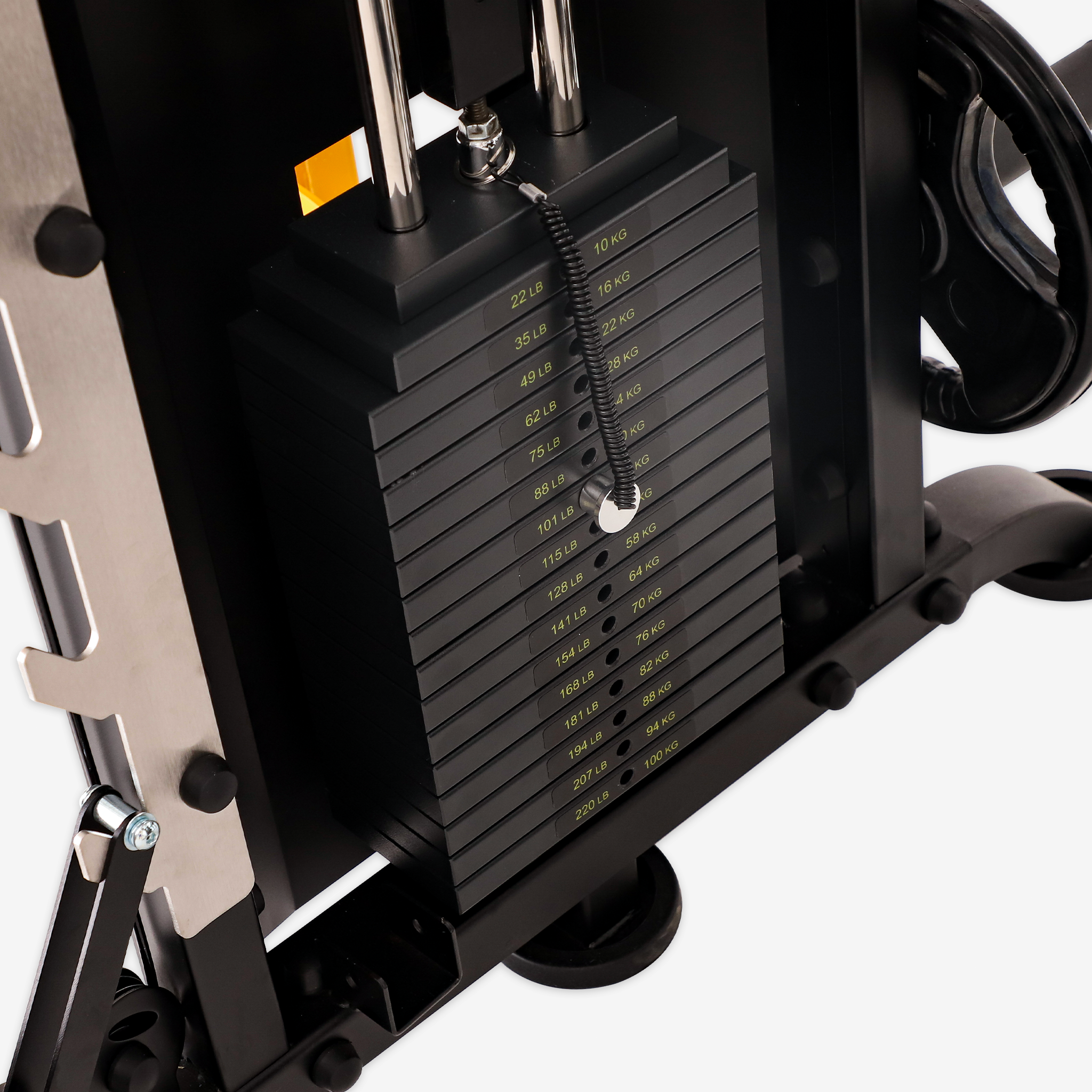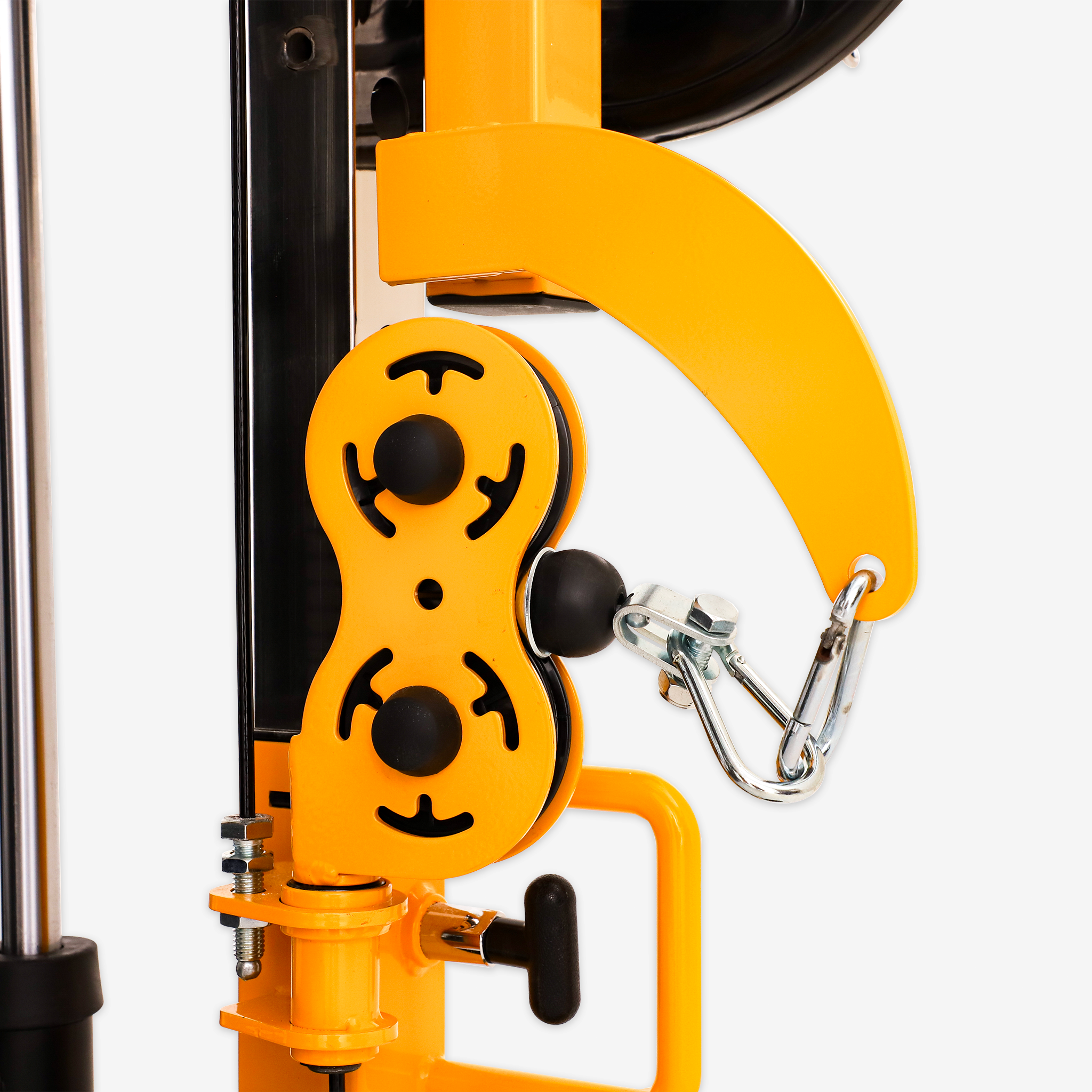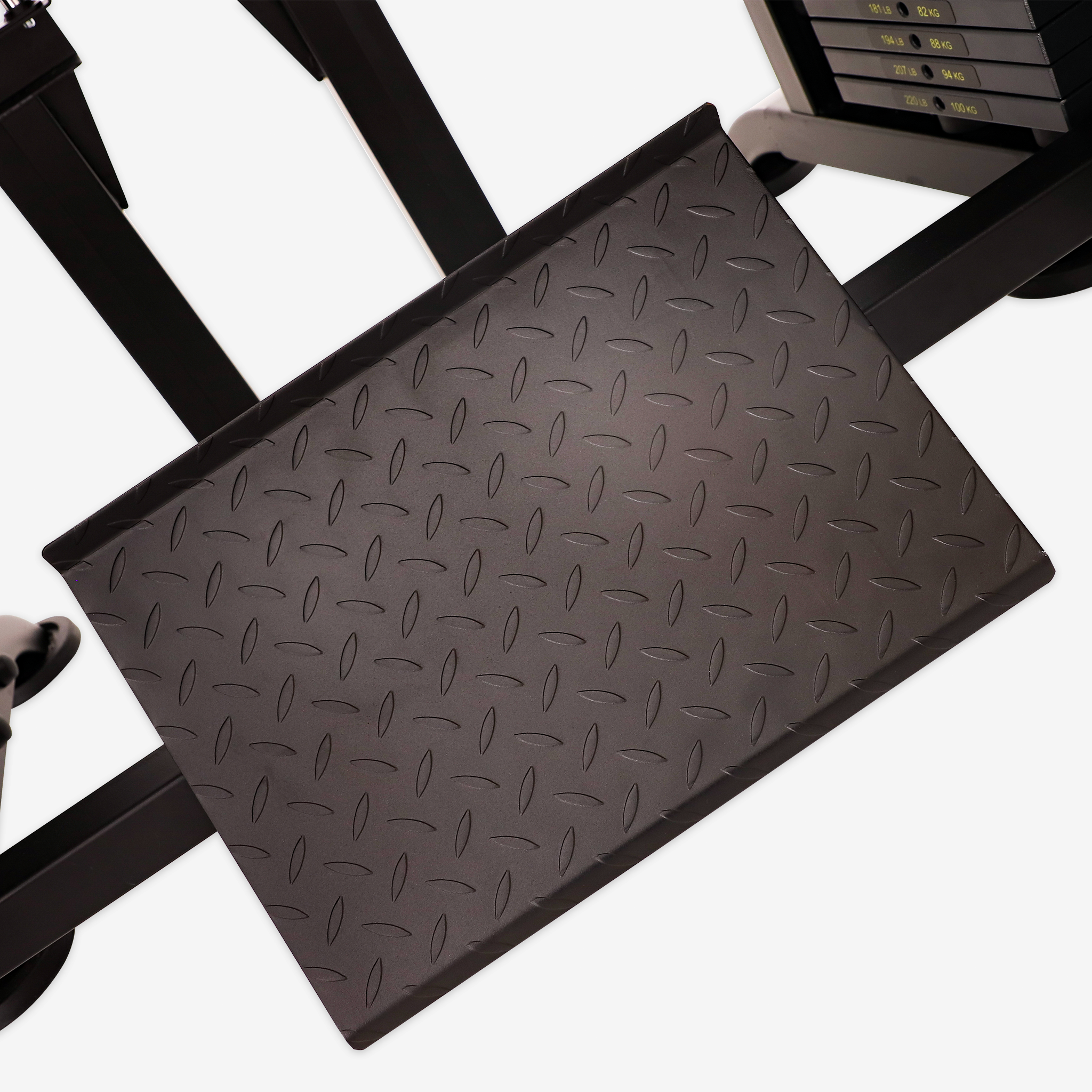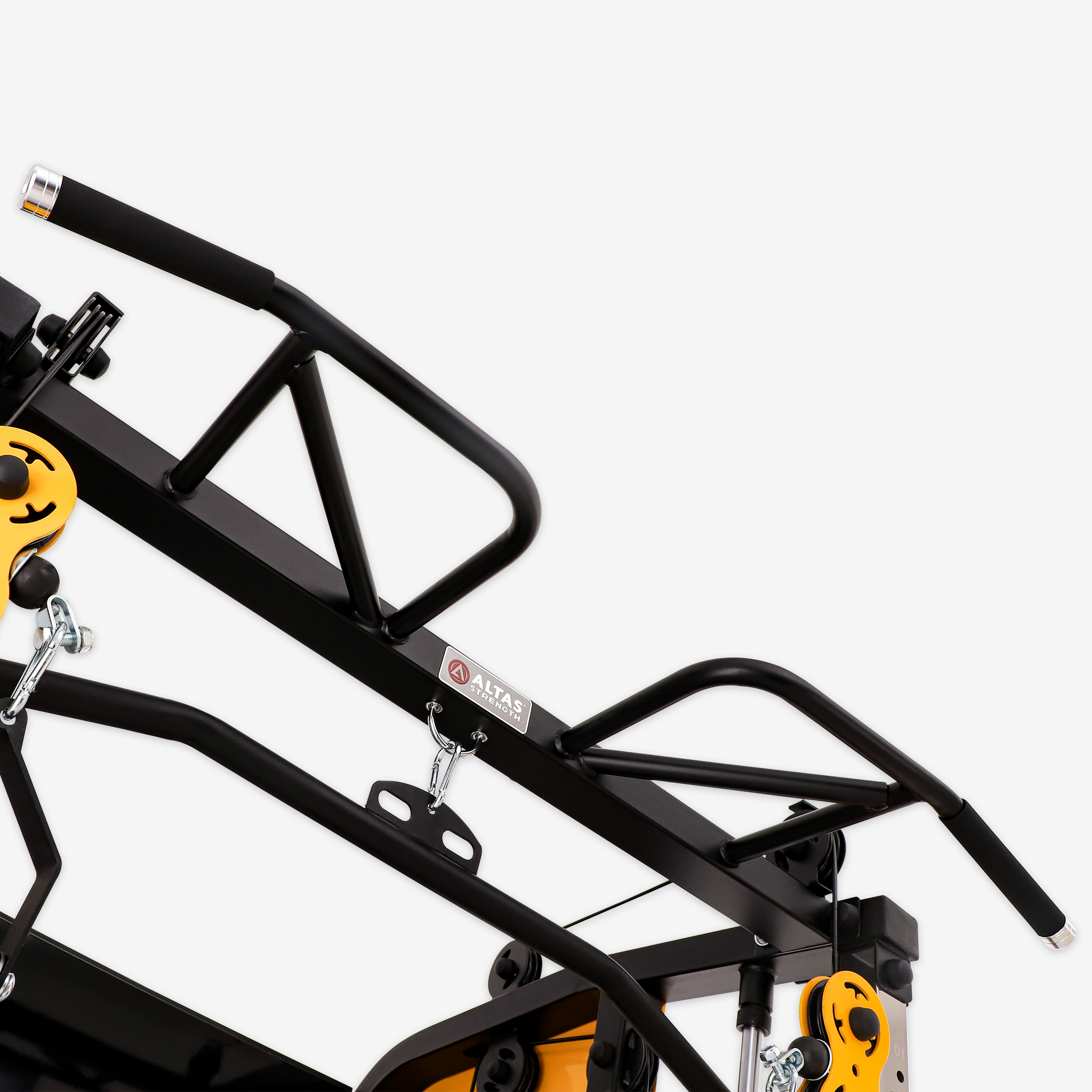The Smith machine is a uniquely designed piece of fitness equipment that integrates a barbell with a mechanical rail system, allowing users to perform various strength training exercises on a fixed path. Its primary purpose is to provide a safer training environment, particularly for individuals engaged in exercises such as weighted squats, bench presses, or shoulder presses. Due to the machine's rail control, users can concentrate more on the movement itself without worrying about losing control of the barbell.
Weight of the Smith Machine Barbell:
The barbell on most Smith machines typically weighs between 15 kg and 20 kg. However, not every Smith machine barbell weighs the same due to the following reasons:
-
Manufacturer Design Differences: The weight of the barbell can vary across different brands and models of Smith machines. Some high-end brands may focus on precise weight control, while certain models might use lighter materials or incorporate balanced designs.
-
Counterbalance Mechanism: Some Smith machines employ counterweight systems or auxiliary pulley systems to reduce the initial load, making it user-friendly for beginners. This design influences the perceived weight of the barbell, making the actual lifting experience lighter than the barbell's actual weight.
-
Purpose and Setting: Smith machines are designed for varied uses; some are tailored for home users and might be lighter to suit a domestic setting, while equipment in professional gyms is usually heavier to accommodate high-intensity training demands.
Advantages of Using a Smith Machine:
-
Safety: The Smith machine provides additional stability through its rail system, allowing individuals to perform high-load training alone, reducing the risk of injury due to center of gravity shifts.
-
Alignment of Movements: For individuals needing posture correction or specific muscle training, the guided rails of the Smith machine help ensure the accuracy of movement trajectories.
-
Diverse Training Options: Beyond traditional bench presses and squats, the Smith machine permits a range of movements, such as lunges, pulls, and bent-over rows, offering comprehensive muscle training.
Considerations:
While the Smith machine offers numerous conveniences and safety assurances, it also has its limitations. Given its fixed path, users should be cautious of overly relying on the machine's support in unsuitable conditions, as this may adversely affect the natural movement of muscles. A balanced combination of free weight training and machine training can help enhance overall muscle coordination and strength.
Conclusion:
Understanding the weight of the barbell and how to properly set a training program is crucial when exercising with the Smith machine. Awareness of the barbell's real weight and personal capability is particularly important when attempting new movements or increasing loads. Moreover, regular consultation with a fitness trainer to ensure proper techniques and movement is essential for maximizing workout efficacy safely.

